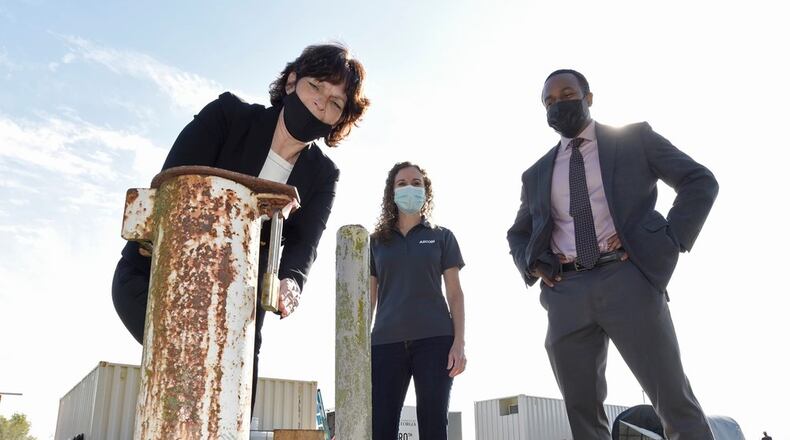The Air Force has spent nearly $59 million to address PFAS chemicals at Wright Patterson, a spokesman for the Air Force Installation and Mission Support Center said last year.
PFAS — per- and polyfluoroalkyl substances that are sometimes called “forever chemicals” — are synthetic chemicals found in the air, water, and soil and can take centuries to break down.
This will be the base’s sixth five-year review, a spokeswoman for the 88th Air Base Wing at Wright-Patterson said in response to questions about the newest review
“PFAS remedial investigation is ongoing,” said Stacey Geiger, a spokeswoman for the 88th Air Base Wing. “Over 195 monitoring wells have been installed at 16 sites where PFAS was released, and over 500 groundwater samples collected and analyzed, and many more soil and sediment samples.”
The base said it is working with the federal and state environmental protection agencies, and the city of Dayton Water department, on technical discussions.
“We also added 10 more PFAS sites to investigate since the U.S. EPA lowered their screening level and more sites fit that metric,” the base said.
Last April, the EPA released a final rule adding two PFAS chemicals to the list of “hazardous substances” under the federal Comprehensive Environmental Response, Compensation, and Liability Act, also known as “CERCLA” or “Superfund” law — the law governing locations requiring long-term clean-up efforts.
The Ohio EPA is providing technical assistance to Wright-Patterson, Ohio EPA spokesman Bryant Somerville said. He referred further questions to the U.S. EPA.
“A FYR (five-year review) is required because hazardous substances, pollutants, or contaminants remain at the sites above levels that allow for unlimited use and unrestricted exposure,” the base said on its web site. “The purpose of the (review) is to evaluate the remedies implemented at the sites in order to determine whether each remedy is and will continue to be protective of human health and the environment.”
“Five-year reviews provide an opportunity to evaluate the implementation and performance of a remedy to determine whether it remains protective of human health and the environment,” the U.S. Environmental Protection Agency says.
The city of Dayton in 2021 filed a $300 million lawsuit against Wright-Patterson and the U.S. Department of Defense, contending that PFAS released by the base over the years threatened to flow into the city’s Mad River wellfield. The wellfield is one of several Dayton uses to supply drinking water to more than 400,000 residents in Dayton and Montgomery County.
At the time of the suit’s filing, Wright-Patt and defense officials denied the city’s allegations, saying they followed federal guidelines and were taking an aggressive approach against the chemicals. By the city’s own admission, the base noted at the time, Dayton’s water was safe to drink.
The case was transferred to a federal court in South Carolina in 2021 under a statute called “multi-district litigation.” It was consolidated with some 10,000 other PFAS-related lawsuits, where little action has taken place.
The base has invited those with questions about the process to contact Wright-Patterson Public Affairs at 88abw.pa@us.af.mil or at 937-522-3252.
About the Author

